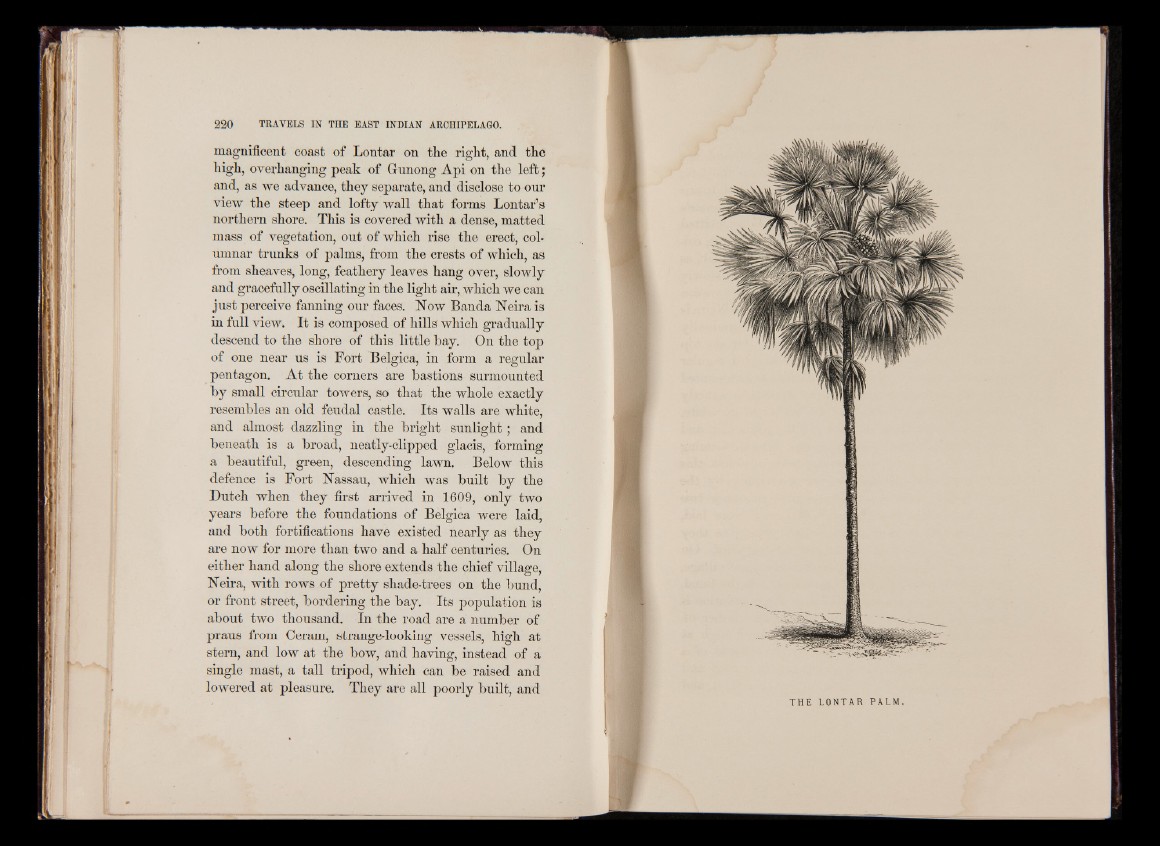
magnificent coast of Lontar on the right, and the
high, overhanging peak of Gunong Api on the left;
and, as we advance, they separate, and disclose to our
view the steep and lofty wall that forms Lontar’s
northern shore. This is covered with a dense, matted
mass of vegetation, out of which rise the erect, columnar
trunks of palms, from the crests of which, as
from sheaves, long, feathery leaves hang over, slowly
and gracefully oscillating in the light air, which we can
just perceive fanning our faces. Now Banda Neira is
in full view. It is composed of hills which gradually
descend to the shore of this little bay. On the top
of one near us is Fort Belgica, in form a regular
pentagon. At the corners are bastions surmounted
by small circular towers, so that the whole exactly
resembles an old feudal castle. Its walls are white,
and almost dazzling in the bright sunlight ; and
beneath is a broad, neatly-clipped glacis, forming
a beautiful, green, descending lawn. Below this
defence is Fort Nassau, which was built by the
Dutch when they first arrived in 1609, only two
years before the foundations of Belgica were laid,
and both fortifications have existed nearly as they
are now for more than two and a half centuries. On
either hand along the shore extends the chief village,
Neira, with rows of pretty shade-trees on the bund,
or front street, bordering the bay. Its population is
about two thousand. In the road are a number of
praus from Ceram, strange-looking vessels, high at
stem, and low at the bow, and having, instead of a
single mast, a tall tripod, which can be raised and
lowered at pleasure. They are all poorly built, and